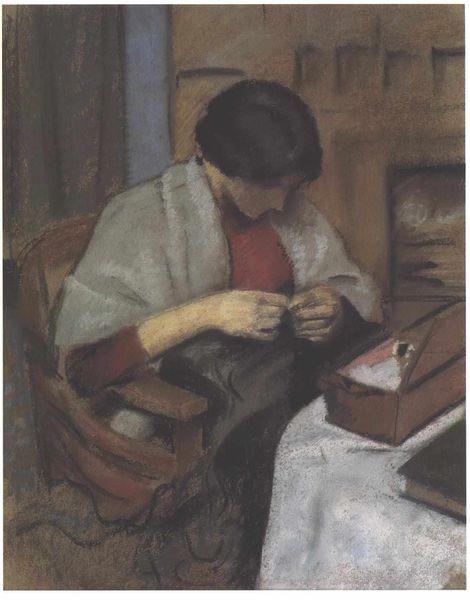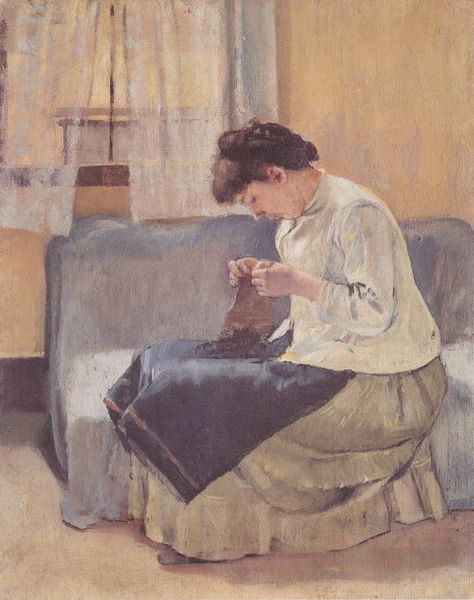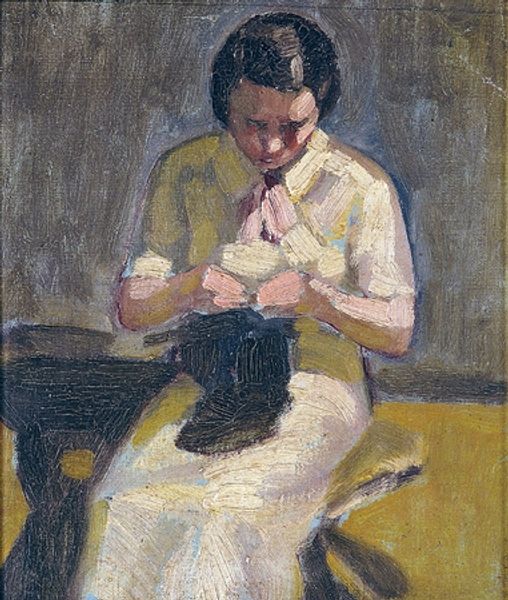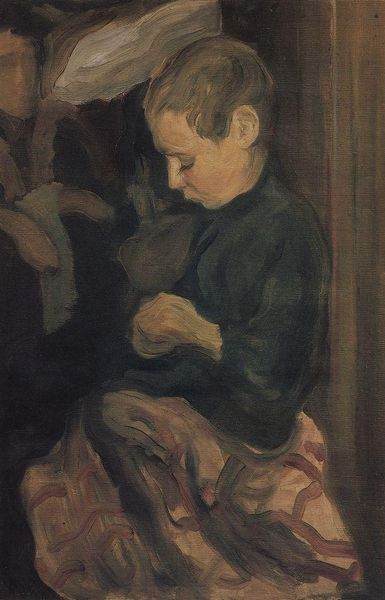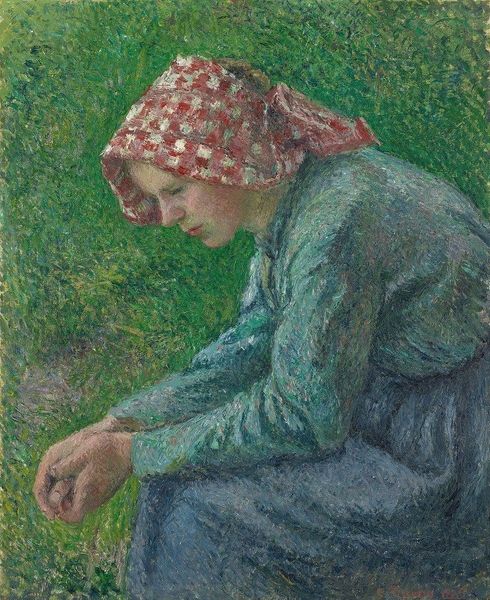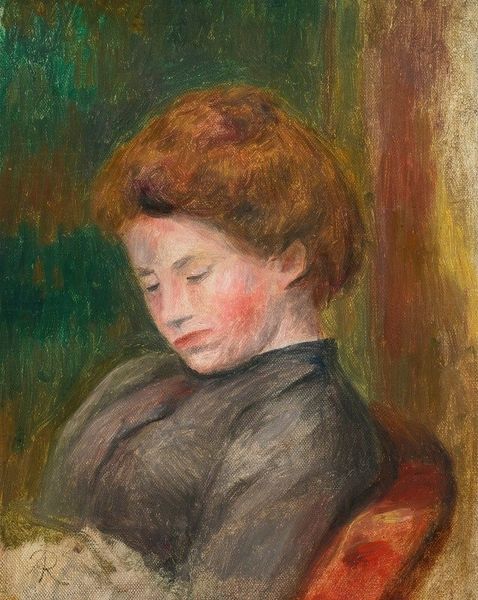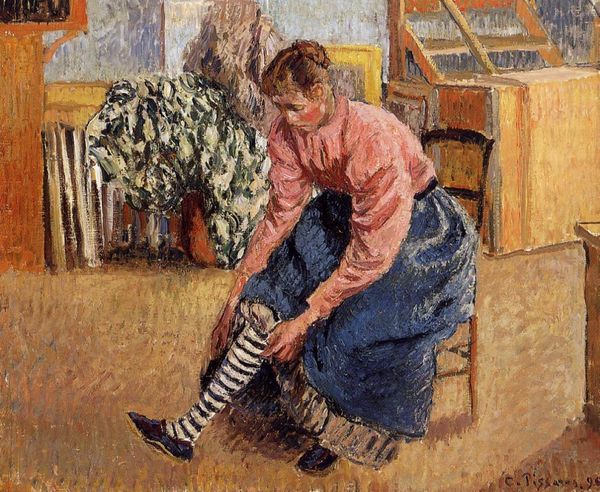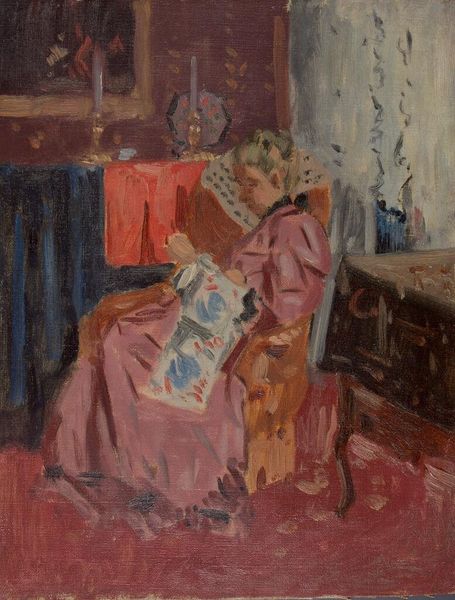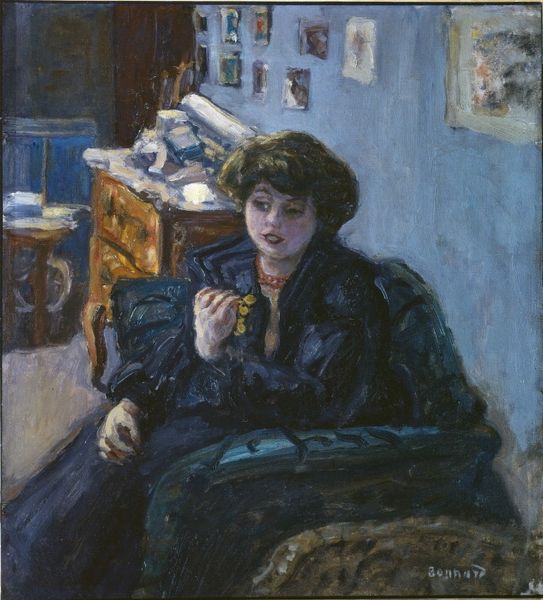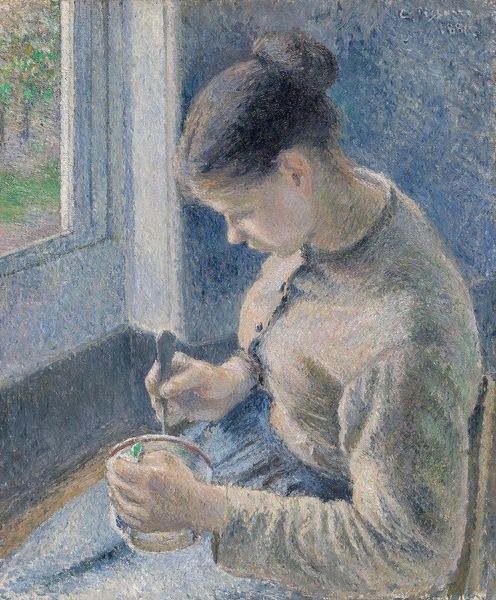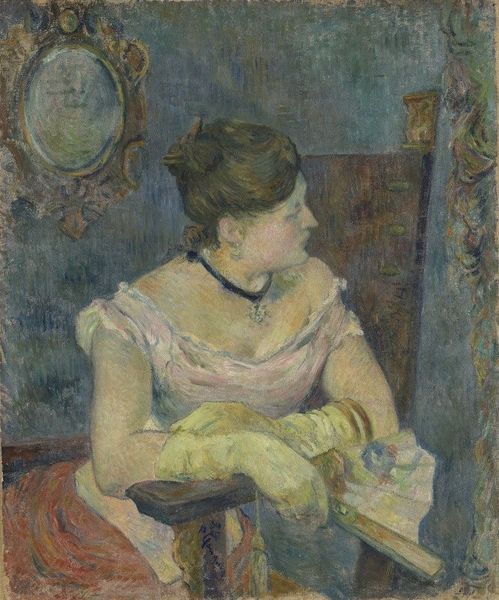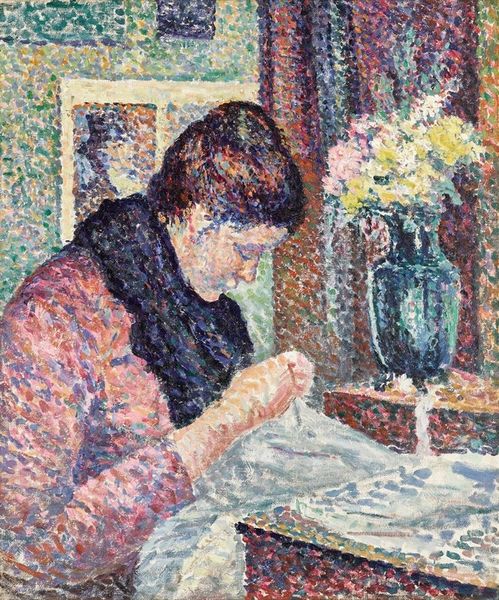
Copyright: Public Domain: Artvee
Camille Pissarro’s "Woman Mending" presents a scene of domestic labor through a canvas worked with delicate, divided brushstrokes. Notice how the composition is built on a series of horizontal lines: the stripes of the tablecloth and the woman’s blouse create a rhythm that both structures and softens the image. Pissarro was deeply involved with anarchist ideas, and his interest in depicting everyday life aligns with a broader movement to elevate the working class. In this painting, the Neo-Impressionist technique doesn't just capture light, but also serves to ennoble the ordinary. The meticulous application of paint, each stroke a deliberate mark, mirrors the woman's careful, repetitive task. The act of mending, typically unseen and uncelebrated, is rendered with a dignity that invites us to reconsider the value of labor. Consider how the formal elements – the subdued palette, the focus on texture, and the quiet, contained composition – all contribute to a sense of respect and appreciation for the subject. "Woman Mending" thus functions as both an aesthetic object and a social statement, challenging conventional artistic hierarchies.
Comments
No comments
Be the first to comment and join the conversation on the ultimate creative platform.
